Rare Reptiles of the Lower Florida Keys - Targeting the Keys Mud Turtle (Kinosternon baurii)10/6/2015 Field update from Jonathan Mays, Florida Fish & Wildlife Conservation Commission, Fish and Wildlife Research Institute, Gainesville, FL ([email protected])
The Florida Keys are a 210-km archipelago comprised of mangrove swamps, tropical hammocks, and pine rockland forest. This subtropical area hosts a unique set of flora and fauna, much of which is found no where else in the United States. The area south of the Seven Mile Bridge (from Big Pine Key to Key West) is of particular biological interest due to the expanse of salt water separating this land mass from the middle and upper keys, and mainland. Most of the lower keys are only 1-2 m (<6 ft) above sea level and thus prone to seawater intrusion during tropical storm events. This isolation coupled with the paucity of available fresh water has hampered or prohibited colonization from a number of mainland animals, reptiles included. Many of the species that have successfully settled in the lower keys are now cut-off from their mainland congeners. Florida's Fish and Wildlife Conservation Commission (FWC) currently considers seven reptile taxa from the lower keys as state threatened: Rim Rock crowned snake (Tantilla oolitica), Key ringneck snake (Diadophis punctatus acricus), Florida brown snake (Storeria victa), red (rosy) rat snake (Pantherophis guttatus), peninsula ribbon snake (Thamnophis sauritus sackenii), Keys mole skink (Plestiodon egregius egregius), and the Keys striped mud turtle (Kinosternon baurii). The red rat snake, peninsula ribbon snake, and striped mud turtle are scheduled to be delisted once state management plans are approved. This July, FWC's Fish and Wildlife Research Institute initiated a project targeting the above seven reptiles in order to garner more information on their distribution, rarity, and effective techniques for detection. Various sampling methodologies are being incorporated including cover-board plots, road-cruising, timed-meander surveys, targeted habitat searches, and soliciting the public for reports via a website - https://public.myfwc.com/fwri/flkeysreptiles/default.aspx The Keys mud turtle is a small semi-aquatic turtle, oval in shape with a dark brown to black carapace and rust colored plastron. The three stripes along the carapace that give mainland individuals their common name ("striped mud turtle") are often muted or lacking in lower keys specimens. Keys mud turtles have large heads with two small, yellow stripes per side. Unlike most of the other target reptiles in this study which have limited location information, the Keys mud turtle was already known from multiple sites among 11 different keys, and can be effectively detected by using baited (e.g., sardines) minnow traps. In an attempt to learn more about mud turtle population size, survival, and detectability in the lower keys, we've incorporated a standardized monthly trapping effort using mark-recapture techniques. During our first 3 months of trapping we tallied 60 trap nights with 17 captures and 6 recaptures, plus 2 turtles found dead-on-road. In addition to recording location and sex/age/shell measurements for each of the turtles, we're also taking a tissue sample for later genetic analysis. Surveys will continue through June 2016 and we anticipate being able to gather a large number of samples. While previous research suggested little genetic variation between the Keys mud turtle and its mainland counterparts (i.e., all are considered the same species), the population in the Lower Keys remains cut-off and may represent a terminal taxa recently diverged from middle, upper keys, or mainland areas. Mud turtles in the keys face many of the same threats as do mainland turtle populations: habitat degradation, road mortality, pollution, and egg predation by subsidized predators (i.e., such as raccoons and house cats that become more abundant around human dwellings). However, unlike most mainland populations, freshwater wetlands are limited in the lower keys and are increasingly affected by over withdrawal by humans and saltwater intrusion. The increase and frequency in large storms has already raised salt content of many lower keys ponds making them unsuitable habitat for mud turtles. Regardless of its genetic significance, the dependence of mud turtles on waters low in salinity and the numerous threats to this habitat make this turtle extremely vulnerable to decline and/or extirpation in the Lower Keys.
1 Comment
Tammy Belanger
9/24/2017 12:04:12 am
I recently aquired one of these turtles. The previous owner was under the impression (had been given to them as "african sideneck") from a school classroom yrs ago.
Reply
Leave a Reply. |
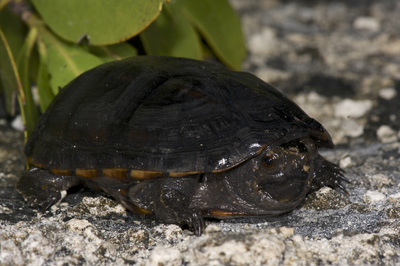
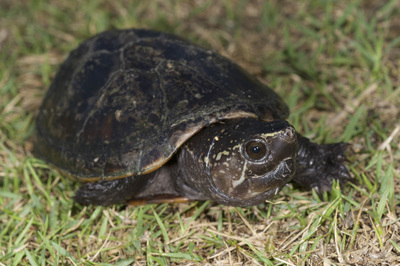
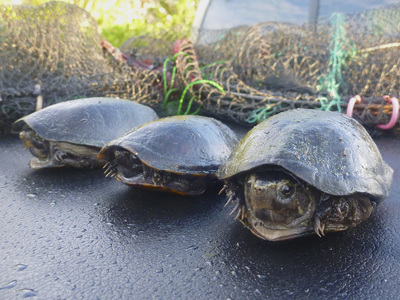

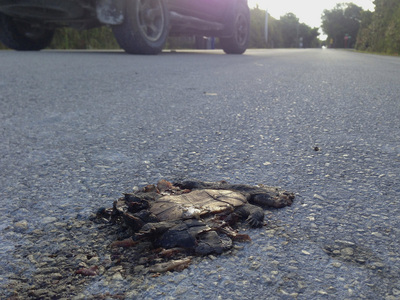
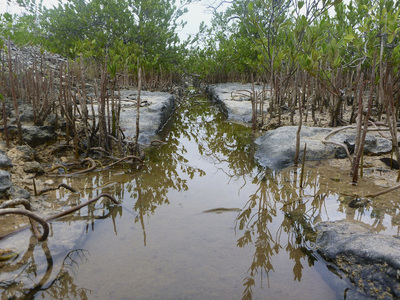
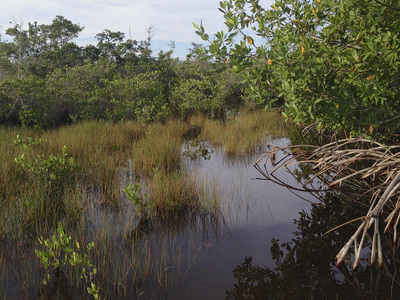
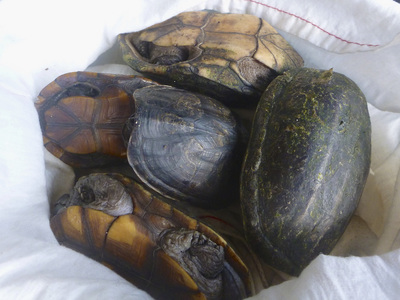
 RSS Feed
RSS Feed